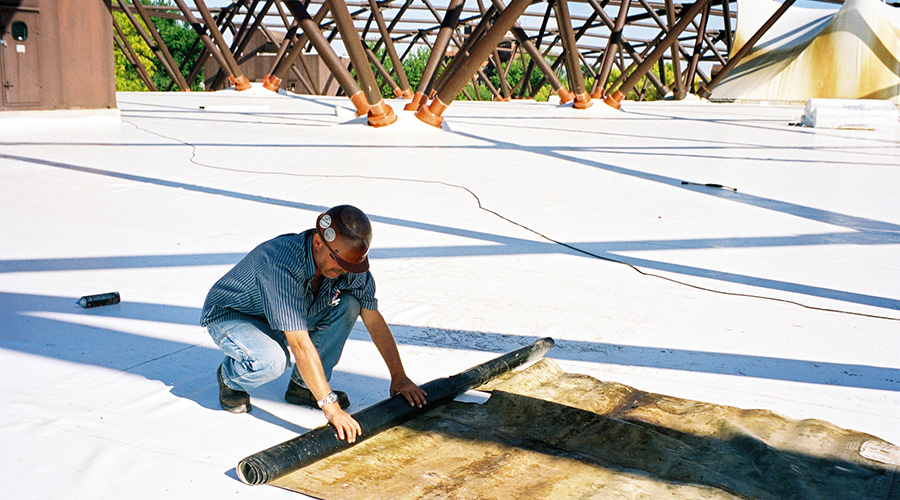RoofPoint System Calls for Roofing Durability
Answering the call for durability is something that RoofPoint — along with other rating organizations, such as Green Globes — takes into account.
"Buildings fail primarily through roof failure," Hoff says. "When moisture gets into the building, then mold gets into the building, and mold is hard to get rid of. It's best just to have a durable roof that doesn't admit water in the first place."
Sometimes, Hoff says, that requires making tough choices. One example is PVC roofing. It is made from petroleum products, but the longevity, emissivity and albedo are excellent; additionally, PVC tear-offs can be recycled into new membranes. For those reasons, Hoff says, that material should be considered, assuming it otherwise meets RoofPoint criteria.
And a notion that's related to durability is resiliency. Hoff and Silvertooth say it's a relatively new term in the roofing industry, but one that will have increasing importance in the years to come.
"'Resiliency' refers to concerns about effects of climate change and extreme events," says Hoff. "It's a new wrinkle in the concept of durability — I'm optimistic about it."
As Hoff notes, when durability of roofing materials and installation goes up, so too does resiliency.
On the topic of installation, RoofPoint guidelines also contain points for what Silvertooth calls "people sustainability."
"Green building initiatives must be viewed in a human and social context," he says. "After all, the whole purpose of sustainable development is to make the world a better place for people, both current and future generations."
Hoff says he agrees. "Standards for energy efficiency are important," he notes, "but it's about people, too."
Hoff adds that some of the RoofPoint pilot projects use new or enhanced features to emphasize worker safety and ergonomics. Examples include strategies to minimize the potential for moisture infiltration and future mold growth, use of low-VOC materials to reduce exposure to air-borne chemicals, design roof areas as a social environment for building occupants, and permanent fall-protection systems to help protect maintenance workers, he says.
"In the end, these don't affect the building owner that much, but it does improve the quality of the work environment," he says.
An Overview of RoofPoint Criteria and Valuation:
RoofPoint for Environmentally Innovative Nonresidential Roofing is organized into five areas representing the primary environmental contributions of modern commercial roofing systems:
- Energy management
- Materials management
- Water management
- Durability/life cycle management
- Environmental innovation in roofing
These areas of RoofPoint are further organized into a series of credits based on critical examination of each primary environmental function. Credits are received assuming the above areas meet the following:
- Intent: The intended result for each credit is stated in terms of a desired environmental performance outcome.
- Requirements: Fulfilling the intent is measured against RoofPoint objectives. Depending upon materials and roofing systems, some requirements might be prerequisites and other requirements might specify levels of performance.
- Technologies and Strategies: A brief discussion of technologies and practices available to meet the requirements
Finally, assuming that roofing meets intent, requirements and uses appropriate technologies, RoofPoint credits are assigned via several classifications:
- Meets intent: The project fulfills the broad intent of the credit although specific conditions of the project do not support full compliance with the credit requirement. (1 point per credit)
- Meets requirement: The roof system meets the credit requirement.
(1 point per credit)
- Exceeds requirement. The roof system substantially exceeds the credit requirement and provides a tangible benefit by exceeding the requirement. (1.5 points per credit)
|
Related Topics:













